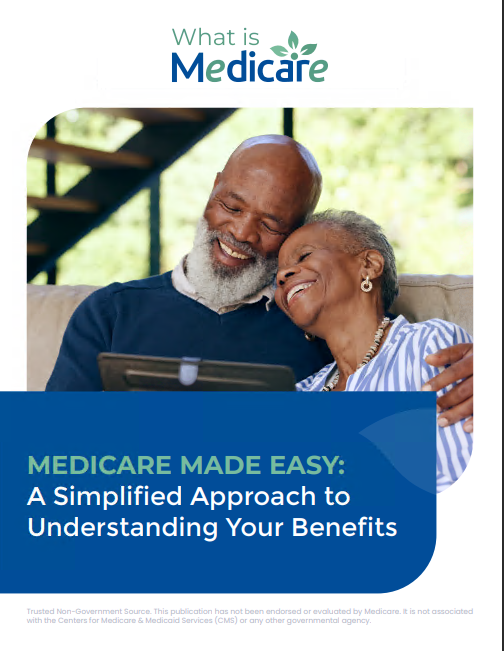Medicare Premiums: Understanding Your Healthcare Costs
Introduction: Unraveling the Complexity of Medicare Premiums
Medicare premiums play a crucial role in determining beneficiaries’ out-of-pocket expenses for healthcare coverage. Understanding the various types of premiums, factors influencing premium amounts, eligibility criteria, and strategies to manage premium costs is essential for beneficiaries to navigate the Medicare program effectively. In this guide, we’ll delve into the intricacies of Medicare premiums, empowering beneficiaries to make informed decisions about their healthcare coverage and manage their expenses with confidence.
Medicare premiums encompass several types of charges that beneficiaries may encounter when enrolling in different parts of the program. The primary types of Medicare premiums include:
- Medicare Part A Premiums: Most beneficiaries do not pay a premium for Medicare Part A (Hospital Insurance) if they or their spouse have a qualifying work history. However, individuals who do not qualify for premium-free Part A coverage may be required to pay a monthly premium based on their work history.
- Medicare Part B Premiums: Medicare Part B (Medical Insurance) requires beneficiaries to pay a monthly premium for coverage. The standard Part B premium amount may vary each year and is based on beneficiaries’ income levels. Higher-income earners may be subject to income-related monthly adjustment amounts (IRMAA), resulting in higher premiums.
- Medicare Part C Premiums: Medicare Advantage plans, also known as Medicare Part C, may require beneficiaries to pay a monthly premium in addition to their Part B premium. Premium amounts vary depending on the specific Medicare Advantage plan chosen and the insurance carrier offering the plan.
- Medicare Part D Premiums: Medicare Part D (Prescription Drug Coverage) provides coverage for prescription medications through private insurance plans approved by Medicare. Part D plans typically require beneficiaries to pay a monthly premium, which varies depending on the specific plan chosen and the beneficiary’s location.
Understanding the types of Medicare premiums helps beneficiaries anticipate their healthcare expenses and select coverage options that align with their budgetary considerations.
Factors Influencing Premium Amounts
Several factors can influence the amount of Medicare premiums that beneficiaries are required to pay. These factors may vary depending on the type of premium and the specific circumstances of the individual. Common factors influencing premium amounts include:
- Income Levels: Medicare Part B premiums are based on beneficiaries’ income levels, with higher-income earners subject to higher premium amounts through income-related monthly adjustment amounts (IRMAA).
- Plan Selection: The type of Medicare plan chosen, such as Original Medicare (Parts A and B), Medicare Advantage (Part C), or Medicare Part D prescription drug plans, can impact premium amounts. Different plans may offer varying levels of coverage and premium costs.
- Geographic Location: Premium amounts for Medicare Advantage plans and Part D prescription drug plans may vary depending on the beneficiary’s location. Insurance carriers may offer different premium rates based on regional factors and market dynamics.
- Plan Features: Premium amounts for Medicare Advantage and Part D plans may vary based on the specific features and benefits offered by the plan, such as coverage for additional services, preferred pharmacy networks, and formulary tiers for prescription medications.
Understanding these factors helps beneficiaries assess their premium obligations and evaluate their options to find Medicare coverage that meets their healthcare needs and budgetary considerations.
Eligibility Criteria for Premium-Free Part A Coverage
While most beneficiaries qualify for premium-free Medicare Part A coverage based on their work history or their spouse’s work history, certain eligibility criteria must be met to qualify for premium-free Part A coverage. To be eligible for premium-free Part A, individuals must:
- Have Sufficient Work Credits: Beneficiaries typically qualify for premium-free Part A coverage if they or their spouse worked and paid Medicare taxes for at least 10 years (40 quarters) in the United States.
- Be Age 65 or Older: Individuals aged 65 or older who meet the work credit requirement are generally eligible for premium-free Part A coverage.
- Be Eligible for Social Security or Railroad Retirement Benefits: Beneficiaries who are eligible for Social Security or Railroad Retirement benefits, even if they have not yet filed for benefits, may qualify for premium-free Part A coverage.
Understanding the eligibility criteria for premium-free Part A coverage helps beneficiaries determine their entitlement to this benefit and plan for their healthcare expenses accordingly.
Strategies to Manage Medicare Premiums
To manage Medicare premiums effectively, beneficiaries can consider the following strategies:
- Review Plan Options Annually: Review Medicare plan options annually during the open enrollment period to assess changes in premium amounts, coverage options, and out-of-pocket expenses. Compare plan features and costs to ensure you are enrolled in the most cost-effective coverage for your healthcare needs.
- Explore Premium Assistance Programs: Explore premium assistance programs, such as Medicare Savings Programs and Extra Help, which offer financial assistance to beneficiaries with limited incomes and resources. These programs can help reduce or eliminate premium costs for eligible individuals, ensuring access to essential healthcare coverage.
- Consider Health Savings Accounts (HSAs): If you have a high-deductible Medicare Advantage plan or a Medicare Part D plan, consider contributing to a Health Savings Account (HSA) to save for future healthcare expenses tax-free. HSAs can help offset premium costs and provide additional financial flexibility for healthcare expenses.
- Stay Informed About IRMAA: Stay informed about income-related monthly adjustment amounts (IRMAA) for Medicare Part B and Part D premiums. Understand how changes in income levels may impact your premium amounts and take proactive steps to manage your finances accordingly.
By implementing these strategies, beneficiaries can effectively manage their Medicare premiums and ensure access to quality healthcare coverage while minimizing their out-of-pocket expenses.
Conclusion: Empowering Beneficiaries with Financial Awareness
Understanding Medicare premiums is essential for beneficiaries to make informed decisions about their healthcare coverage and manage their expenses effectively. By familiarizing themselves with the types of premiums, factors influencing premium amounts, eligibility criteria, and strategies to manage premium costs, beneficiaries can navigate the Medicare program with confidence and financial awareness.
Empower yourself with knowledge, explore premium assistance programs, and review your plan options annually to ensure you are enrolled in the most cost-effective coverage for your healthcare needs. Your health and financial well-being are our top priorities—let us help you decode Medicare premiums and navigate your healthcare expenses with confidence.
Ready to learn more about managing your Medicare premiums effectively? Download our free eBook. Connect with our licensed insurance agents today to explore Medicare plan options and find coverage that meets your healthcare needs while minimizing your premium costs. Your health and financial well-being are our top priorities—let us help you navigate Medicare premiums with confidence and peace of mind.



